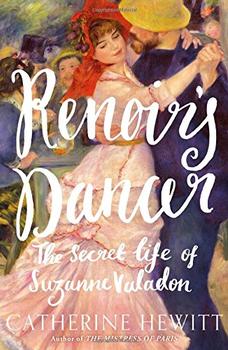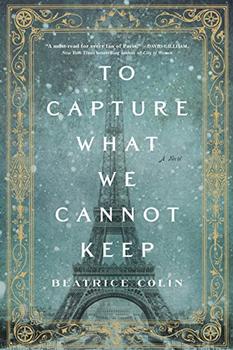Summary | Excerpt | Reading Guide | Reviews | Beyond the book | Read-Alikes | Genres & Themes | Author Bio

Set at a moment of profound artistic, cultural, and societal change, The Painted Girls is a tale of two remarkable sisters rendered uniquely vulnerable to the darker impulses of "civilized society." In the end, each will come to realize that her salvation, if not survival, lies with the other
1878 Paris. Following their father's sudden death, the van Goethem sisters find their lives upended. Without his wages, and with the small amount their laundress mother earns disappearing into the absinthe bottle, eviction from their lodgings seems imminent. With few options for work, Marie is dispatched to the Paris Opéra, where for a scant seventeen francs a week, she will be trained to enter the famous ballet. Her older sister, Antoinette, finds work as an extra in a stage adaptation of Émile Zola's naturalist masterpiece L'Assommoir.
Marie throws herself into dance and is soon modeling in the studio of Edgar Degas, where her image will forever be immortalized as Little Dancer Aged Fourteen. There she meets a wealthy male patron of the ballet, but might the assistance he offers come with strings attached? Meanwhile Antoinette, derailed by her love for the dangerous Émile Abadie, must choose between honest labor and the more profitable avenues open to a young woman of the Parisian demimonde.
Set at a moment of profound artistic, cultural, and societal change, The Painted Girls is a tale of two remarkable sisters rendered uniquely vulnerable to the darker impulses of "civilized society." In the end, each will come to realize that her salvation, if not survival, lies with the other.
Cathy Marie Buchanan offers an unsentimental look at family and love during an era more noted for its glamor and optimism, wealth and excess. While the story can be heartbreaking at moments, Buchanan's beautiful prose gives this emotional read, hope...continued
Full Review
(1003 words)
This review is available to non-members for a limited time. For full access,
become a member today.
(Reviewed by Jennifer Dawson Oakes).
The more than forty year period from the early 1870s to the beginning of World War I saw peace across much of Europe. Fueled by the continuing advancements of the Industrial Revolution, the era was marked by optimism and prosperity - for some. In France, this period is known as La Belle Époque, 'the beautiful age', a description applied to it in hindsight after the horrors of the First World War. During this time, the arts flourished. Theater, music, visual arts and literature evolved and gained worldwide attention.
 Many well-known artists came in to prominence during the Belle Époque. Artists Paul Gauguin, Henri Matisse, Henri Rousseau, Henri de Toulouse-Lautrec and a very young Pablo Picasso were hard at work. Writers Guy...
Many well-known artists came in to prominence during the Belle Époque. Artists Paul Gauguin, Henri Matisse, Henri Rousseau, Henri de Toulouse-Lautrec and a very young Pablo Picasso were hard at work. Writers Guy...
This "beyond the book" feature is available to non-members for a limited time. Join today for full access.

If you liked The Painted Girls, try these:

by Catherine Hewitt
Published 2018
Catherine Hewitt's richly told biography of Suzanne Valadon, the illegitimate daughter of a provincial linen maid who became famous as a model for the Impressionists and later as a painter in her own right.

To Capture What We Cannot Keep
by Beatrice Colin
Published 2017
Set against the construction of the Eiffel Tower, this novel charts the relationship between a young Scottish widow and a French engineer who, despite constraints of class and wealth, fall in love.